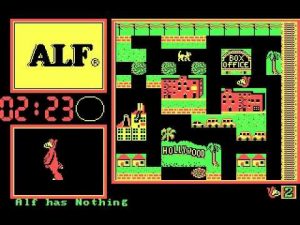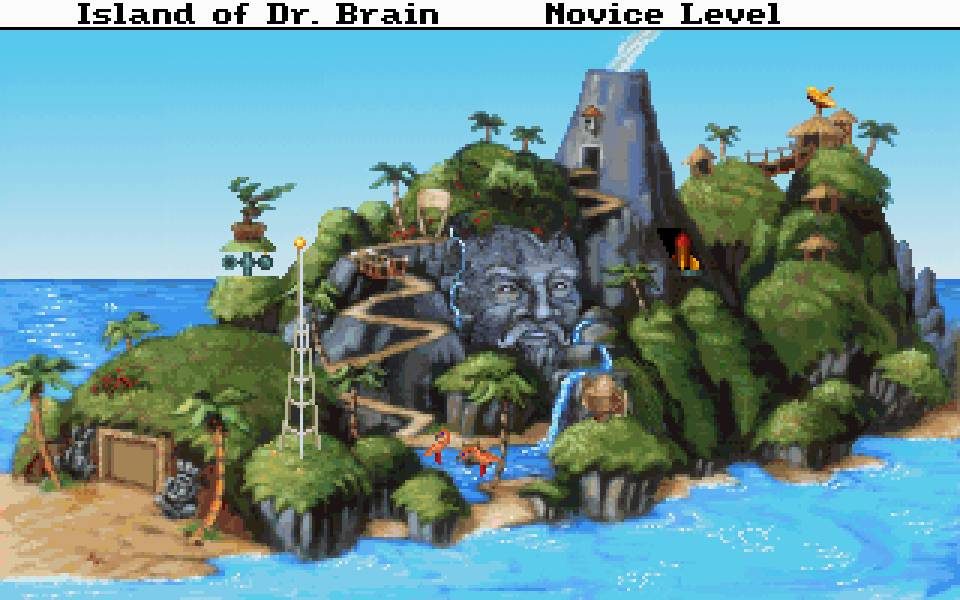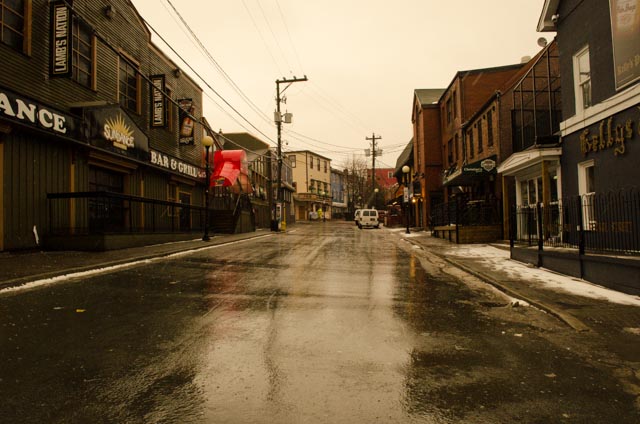All things retro seem to be getting their moment in the sun once again for fleeting periods of popularity that last as long as the nostalgia can. Cartoons of the 80s and 90s pop up intermittently – the recent box set rerelease of the classic Teenage Mutant Ninja Turtles show of my youth in that Turtle Van shaped packaging; the forthcoming big screen adaptation of Jem and the Holograms is another example.
There’s also a whole resurgence of oldie but goodie classic toys that are finding their way back into stores and new toys celebrating anniversaries of retro cult-loved-content like Ghostbusters (see the recently released Lego set). The target audience for all of this isn’t just a new generation of kids, it’s also (possibly the larger share of it) the 20 and 30-somethings who have so many rich, happy memories associated with the various products and content.
 Before gaming consoles really took off (specifically when that is and which one was the pioneer is debatable), game geeks and casual gamers alike relied on PCs and MS-DOS for fun. I remember playing text-based MUDs before graphics even got involved – you had to use your imagination and the words on screen to feel your way through a forest, to a castle and through its halls with the game telling you whether or not a command was do-able. Then graphics seeped in, in their two-tone original form. So many hours were spent playing a 5” floppy disc with Alf: The First Adventure on a Macintosh in my afterschool program, escaping the dog catcher. There was also the original two-tone Wheel of Fortune.
Before gaming consoles really took off (specifically when that is and which one was the pioneer is debatable), game geeks and casual gamers alike relied on PCs and MS-DOS for fun. I remember playing text-based MUDs before graphics even got involved – you had to use your imagination and the words on screen to feel your way through a forest, to a castle and through its halls with the game telling you whether or not a command was do-able. Then graphics seeped in, in their two-tone original form. So many hours were spent playing a 5” floppy disc with Alf: The First Adventure on a Macintosh in my afterschool program, escaping the dog catcher. There was also the original two-tone Wheel of Fortune.
By grade two when the L illiehammer Olympics took place, there was a computer in the classroom that students took turns on to play the still MS-DOS based Winter Olympics – Lilliehammer ’94, in colour. The teacher used it as a tool to show the classroom of 10 year olds what the different winter Olympic sports were, and how they worked, through playing the game. To this day I’m convinced that the game in conjunction with Miss Ellsworth’s other uses of the winter Olympics for educational purposes is the reason I love the winter games more than the summer ones.
illiehammer Olympics took place, there was a computer in the classroom that students took turns on to play the still MS-DOS based Winter Olympics – Lilliehammer ’94, in colour. The teacher used it as a tool to show the classroom of 10 year olds what the different winter Olympic sports were, and how they worked, through playing the game. To this day I’m convinced that the game in conjunction with Miss Ellsworth’s other uses of the winter Olympics for educational purposes is the reason I love the winter games more than the summer ones.
The sort of gaming enhanced education trend even continued into later school years. The Learning Company’s Super Solvers series included all kinds of titles, like Treasure Mountain. There were other games too that were so fun, kids had no idea they were learning about everything from commerce and money, to math, spelling, and more. Sierra’s 1992 releases Castle of Dr. Brain and Island of Dr. Brain also offered loads of puzzles and Broaderbund’s Where in the World is Carmen Sandiego was an opportunity to explore geography, spinning off of that kid-loved amazing game show that used to come on PBS.
Outside of school in the mid 90s Jazz Jackrabbit was a personal favourite. And, there was of course the non-parent approved Doom, which when you consider what’s currently in the market with respect to gaming content, it pales in comparison as fodder for parental backlash. I never had Doom but my cousins did, and it was always a treat to play.
So where is this big walk down ‘retro’ memory lane coming from? Recently the Internet Archive (archive.org) announced that it was making over 2,300 MS-DOS games available to play online through their website in a software library. And, all of these aforementioned titles are amongst those available along with dozens of others that sucked up so much time during my youth and that of many others. There are some titles in the mix that I actually remembered playing more on the original Nintendo Entertainment System (NES) and even the Super Nintendo. One of those for example is Disney’s Aladdin which I still have a SNES cartridge for to this day.
Other massive classics like Paperboy, Pipe Dream, and Qbert are also available in the massive archival offering and when the library went live, it was incredibly difficult to resist going through the entire list because every push of the scrolling wheel unveiled more happy memories. Even when you click into a title that seems vaguely familiar and suddenly realize in your adult life that the game was incredibly bad, it’s hard not to still love, or get a kick out of, the memory moment.
 One game not in the list was Sierra’s Roger Wilco’s Space Quest 5 (or any of them for that matter). I still have the original box my copy came in, and inside it the six 3.5” floppy discs required for the install still remain. It came out in 1993 and ran on Windows, so I’m not surprised it’s not in the archive’s mix. But nonetheless, the release of the archive still brought back that nostalgia too.
One game not in the list was Sierra’s Roger Wilco’s Space Quest 5 (or any of them for that matter). I still have the original box my copy came in, and inside it the six 3.5” floppy discs required for the install still remain. It came out in 1993 and ran on Windows, so I’m not surprised it’s not in the archive’s mix. But nonetheless, the release of the archive still brought back that nostalgia too.
It’s hard not to also think about unboxing my old school systems like NES, SNES, and various GameBoys over the years. I got my NES the year I got chicken pox out of the way. I had them months before my birthday in June of that year, and mom already had the NES purchased. So, she sneakily unboxed it and brought it into my room exclaiming she had rented one for me from East Coast Video (where Microplay is now) for one week. I was heartbroken when it had to go back but so, so thrilled to have one of my own in short order. Mom, of course, never told me the truth of the situation until many years later.
That conveniently leads to mentioning something I’d be remised not to address – the closure of the last Jumbo Video on January 30, 2015. It’s the last of its kind in the St. John’s metro region, the final dinosaur falling in the new content-on-demand era. Zip.ca, Netflix, and other streaming services certainly played a role in the eradication of the rental shops, but even games are available in a direct-to-home delivery through each system’s own eShop. I still prefer to buy a physical copy (the same goes for CDs or vinyl) because I want the packaging and artwork, in the fully realized and intended form.
When we found out the big ‘Jumbo Video’ elephant was making an exit, the day it was announced we sped to Highland Drive and spent almost two and a half hours perusing every single aisle, wall display, and shelf. I regularly made visits to that Jumbo in the last few years to pick up previously viewed movies and games in twos and threes. It was an inexpensive way to get the content, you still got the original cases and sleeves, and the wait for titles to slip on to P.V. shelves wasn’t ever even that long. Plus, they always had a great selection of mainstream titles, and hard to find ones like indie produced content and documentaries. They will be missed.
And, it’s important to stop and notice the changeover in how we access content. Sure everyone saw it coming; it’s been slowly evolving to this point for years. But it’s still crazy to imagine that to anyone under a certain age, and for all kids to come, they will now only know the rental shop experience through fabled stories. They’ll exclaim, “REALLY?!” and it will be unfathomable to them that people once got in a car or walked to a shop to browse through hundreds of cases on walls and shelves to pick a movie or video game to pay $5 or so to borrow or “rent” for three or seven days depending on how old it was. It’s one thing now ‘retro’ that probably won’t see resurgence anytime soon.
To visit the Internet Archive’s MS-DOS software library, go here: https://archive.org/details/softwarelibrary_msdos_games












Leave A Reply